Inside the brutal world of ice hockey: The ‘most dangerous’ pro sport there is, where enforcers are paid to fight and knockouts are the norm – as Adam Johnson’s death raises more questions than ever
The sport of ice hockey is in the spotlight following the tragic death of Nottingham Panthers star Adam Johnson last weekend.
During a match against Sheffield Steelers, Johnson, 29, had his throat slit by opponent Matt Petgrave’s knife, leaving the 8,000 fans in attendance shocked.
There have been tributes to Johnson from the hockey community and beyond, while his teammate Westin Michaud has defended Petgrave after he was shockingly accused of deliberately kicking Johnson prior to his death.
The England Ice Hockey Association (EIHA) took swift action following Johnson’s death by making neck protectors mandatory for all players from 2024, and they have made a ‘strong recommendation’ that players should also use them before this date.
But can more be done to make the sport safer? After all, as one fan summarized on X on Saturday, ice hockey is “probably the most dangerous sport in the world.”

Adam Johnson (pictured) died this weekend after his throat was slit by the blade of a skate during an ice hockey match
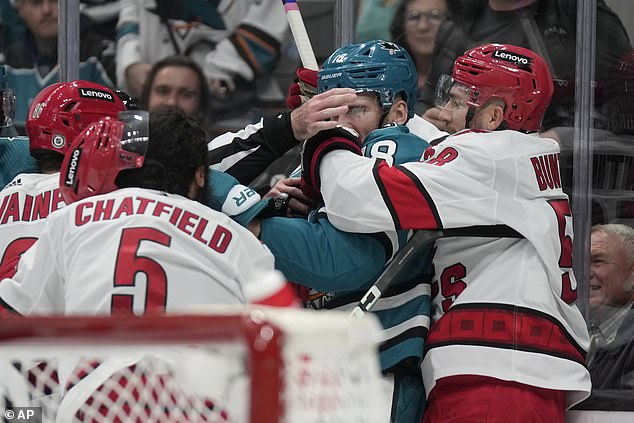
Fights regularly break out in ice hockey and those involved are often not automatically sent off
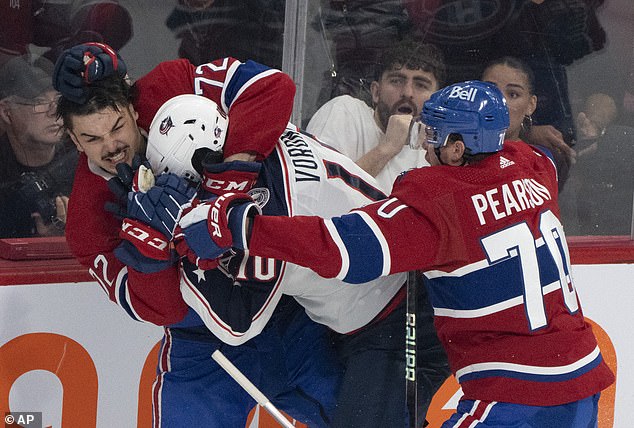
Multiple players can be involved, which can sometimes lead to ugly scenes on the ice
Let’s first look at the role of the ‘enforcers’.
These players are also called the ‘fighter’ because that is exactly what they do.
They are tasked with responding to foul play from opponents by fighting or controlling them, and they do not often require a second invitation to join in.
Enforcement officers are also known to take boxing lessons to improve their skills, highlighting how seriously they take their role.
Next we move on to the players known as ‘pests’.
These are the ultimate wind-up traders, players who want to incite their opponents through excessive physical play or verbal abuse. If they get a response, they’ve done their job.
When you have pests that want to start a fight and enforcers are eager to join them, physical confrontations at the rink are inevitable.
According to Insidetherink.comthere were 334 official fights in the National Hockey League (NHL) – widely considered the sport’s gold standard division – during the 2022-2023 season.
Remarkably, that figure is significantly lower than at the turn of the millennium, but that’s still a lot of battles over the course of a campaign.
In almost any other sport, getting into a fight would automatically result in a player being sent off the field. Even sticking a hand in an opponent’s face in football is likely to result in a red card.
But ice hockey is very different.
The standard response to a fight is to hand out a major five-minute punishment. Fighters deemed instigators could also face harsher sanctions. Yet players in the NHL are not automatically ejected for fighting.
There are a number of rules that must be adhered to. Players cannot use their hockey sticks as a weapon, must keep their helmets on, and must remove their gloves to fight bare-knuckle as the padding in the gloves can lead to more serious injuries.
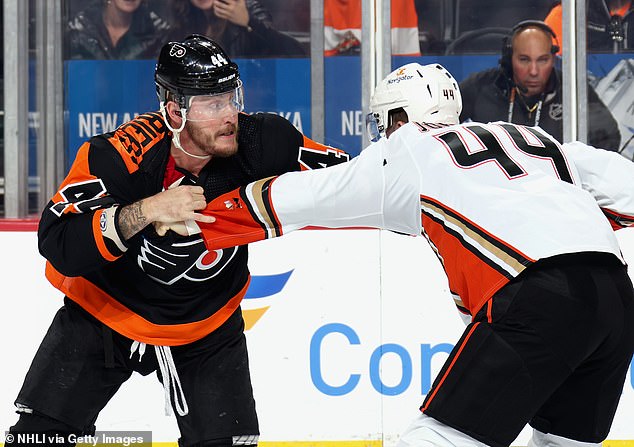
Players must remove their gloves to fight bare-knuckle, while also keeping their helmets on
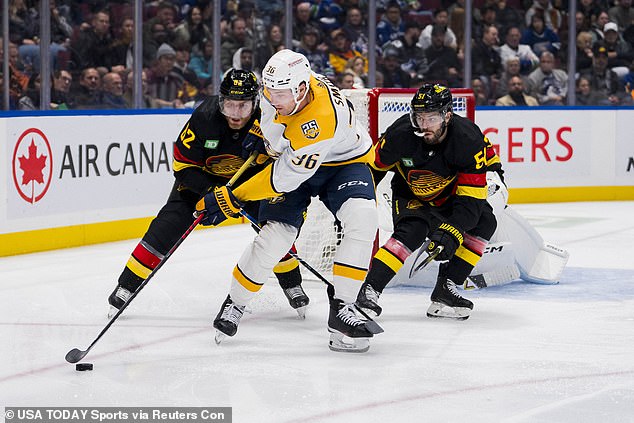
His death has raised questions about how safe the sport of ice hockey really is
If a player receives three major penalties in a match, including fighting, he will be ejected and fined, but this gives him two chances to cause chaos on the ice without receiving the ultimate penalty.
With this in mind, it’s no wonder that fights can regularly get out of hand.
Ice hockey uses the term “roughing” for smaller fights that take place with gloves on, where the referees feel in control and allow more room to play. These fights usually result in a two-minute penalty being handed out.
But some fights become much more serious, and it is not uncommon for one or more players to be left in a heap on the ground and in need of medical attention.
This is where ice hockey gets its ‘most dangerous’ label.
Players can be knocked out if they get involved in fights, or suffer other serious injuries if they fall to the ground. Don’t forget that these physical fragments all take place on ice, just to add that extra bit of danger!
Famous American comedian Rodney Dangerfield once joked, “I went to the fights last night and a hockey game broke out.” This joke shows how often there is fighting in ice hockey.
The question remains: is it time for that to change?
Following Johnson’s death, safety in sports has never been more important.
Fights breaking out in hockey have become the norm, and it brings the crowd to their feet as they watch to see who will come out on top.
But is it all worth it? Is fighting really necessary in a sport where players already endanger themselves by racing across the ice at barely believable speeds while trying to control a puck?
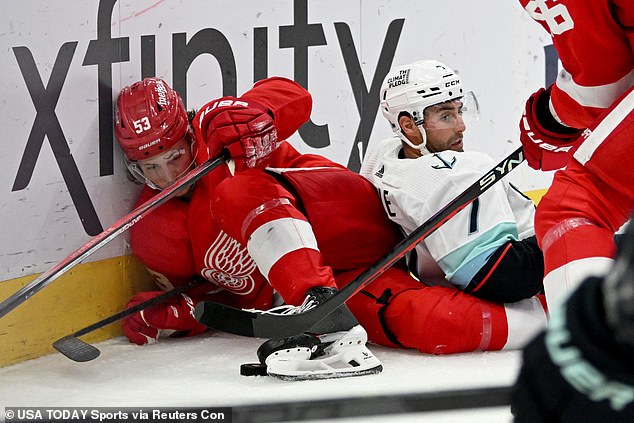
Fights can land multiple players on the ice, which can lead to serious injuries
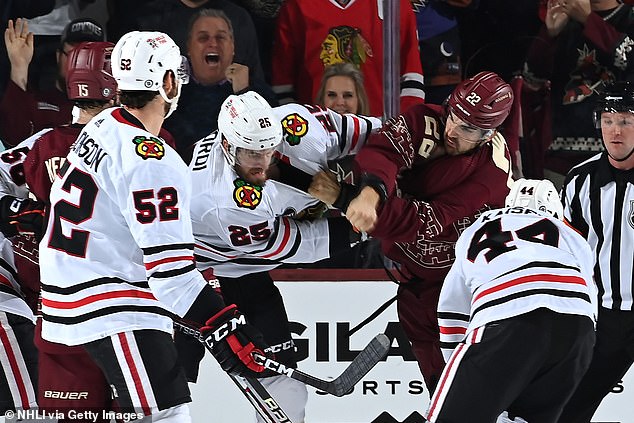
The fights entertain the audience, but the question remains whether they are really necessary
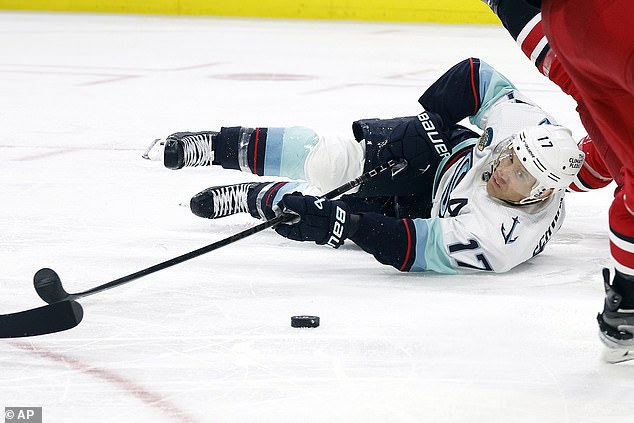
Ice hockey is already a dangerous sport without fighting, where players try to control a small puck on the rink
These questions have been asked before and hockey has largely remained the same.
Yes, the number of fights has decreased, but they are still common.
The introduction of mandatory neck protectors is a step in the right direction for the sport.
Now hockey must ask itself whether it is willing to go even further to protect players in the future.
